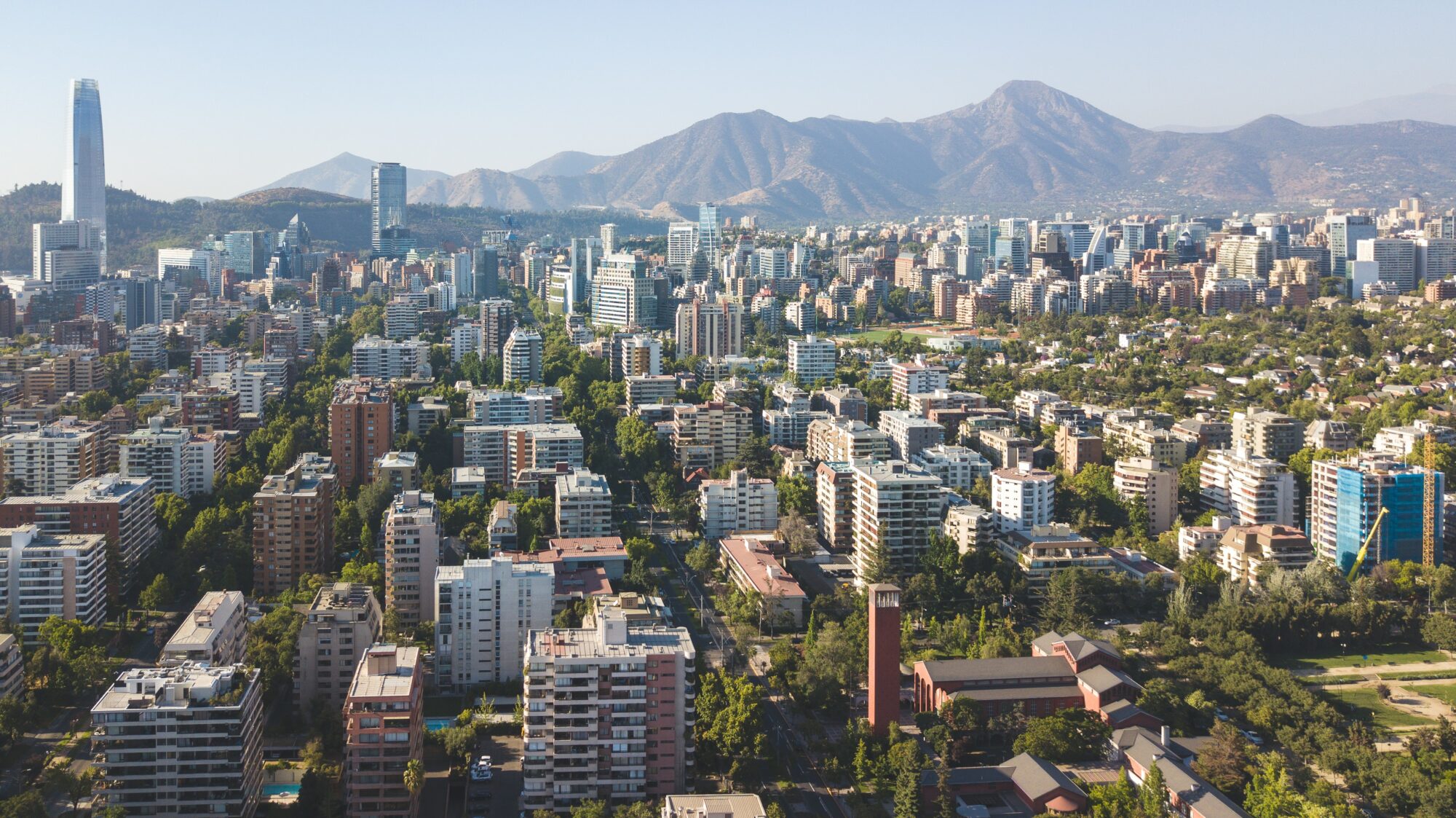The City of the Island Hills
Nestled in Chile’s central valley, Santiago is a testament to a rich history that dates back to its founding by Spanish conquistador Pedro de Valdivia in 1541. Today, it’s not just the political and financial heart of Chile but also a melting pot of neoclassical architecture, art deco, and neo-gothic styles. The city’s unique topography, marked by standalone hills and the swift Mapocho River, is complemented by the majestic Andes Mountains, framing Santiago’s skyline.
A Confluence of Cultures and Eras
Santiago’s urban landscape is a canvas displaying centuries of history and modernity. The city center, with its 19th-century neoclassical grandeur, coexists with the vibrant “Sanhattan” — Santiago’s bustling financial district. The city’s cultural tapestry is woven with threads from its indigenous roots, colonial past, and the dynamic thrust of contemporary life.
The Heartbeat of Chile
As the seat of government and a hub for multinational corporations, Santiago pulses with political and economic life. The city’s high density of population and businesses in the Santiago Metropolitan Region, which houses 40% of Chile’s population, underscores its role as the country’s nucleus.
From Foundation to Modernity
The Birth of Santiago
The city’s origins are as dramatic as its landscape. Founded on the banks of the Mapocho River, Santiago has endured the onslaught of indigenous attacks, earthquakes, and floods. Yet, from the ashes of destruction, it has consistently risen, rebuilding and reinventing itself from the colonial era to the republican age.
The Evolution of an Urban Identity
Santiago’s growth has been both a reflection of and a response to the various historical events that have shaped Chile. From the pivotal Battle of Maipú securing Chilean independence to the city’s industrial boom in the early 20th century, Santiago has been at the forefront of the nation’s journey.
A Metropolis in Constant Motion
The city’s expansion has been a tale of migration, urban planning, and adaptation. The 20th century saw a population explosion, leading to the urbanization of rural areas and the creation of a diverse cityscape that catered to all social classes. Santiago’s development has been marked by the establishment of parks, the expansion of the railway system, and the introduction of modern amenities like the Santiago Metro.
Challenges and Triumphs
Battling Geography and Climate
Santiago’s geography presents both beauty and challenges. The Andes Mountains contribute to a smog problem, especially during the winter months. The city’s efforts to combat environmental issues are ongoing as it seeks to balance urban growth with sustainability.
The Pulse of Progress
The city’s infrastructure, from the iconic San Cristóbal Hill to the modern Santiago Metro, reflects its continuous stride towards progress. Santiago’s transformation over the centuries has been marked by a commitment to improvement and innovation.
A Cultural and Economic Powerhouse
Santiago’s role as a cultural hub is evidenced by its numerous theaters, museums, and historical sites. Economically, it has transitioned from a city overshadowed by Valparaíso to becoming the undisputed economic center of Chile, with a significant portion of the national manufacturing industry based within its confines.
Santiago Today: A Glimpse into the Future
Embracing Modernity While Honoring History
Santiago’s journey from a colonial outpost to a modern metropolis is a narrative of resilience and vision. The city continues to embrace modernity, with its skyline dotted with skyscrapers, while also preserving its historical heritage.
A City for All Seasons
Whether it’s the verdant parks, the snow-capped Andes, or the vineyards that surround its outskirts, Santiago offers a diverse experience for residents and visitors alike. Its ability to offer both urban excitement and natural beauty makes it a unique destination.
The Future Woven from the Past
As Santiago looks to the future, it carries with it the lessons and legacies of its past. The city’s evolution is ongoing, with each chapter adding to the rich story that makes Santiago a vibrant and enduring symbol of Chilean spirit and tenacity.

